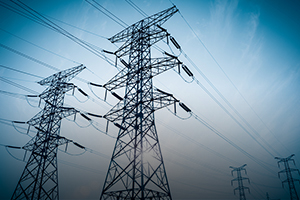Redesigning the Grid
 When it comes to designing the energy grid of the future, China has taken a clear lead with the deployment of “new” technology that can transmit power over very long distances more efficiently. While most electricity is currently transmitted as alternating current (AC), State Grid Corporation of China – the largest of its two utilities – has turned to ultra-high-voltage direct current (UHVDC) to expand distribution of renewable energy.
When it comes to designing the energy grid of the future, China has taken a clear lead with the deployment of “new” technology that can transmit power over very long distances more efficiently. While most electricity is currently transmitted as alternating current (AC), State Grid Corporation of China – the largest of its two utilities – has turned to ultra-high-voltage direct current (UHVDC) to expand distribution of renewable energy.
DC transmission offers a number of advantages over AC cables. Transmission losses are 30 to 40 percent lower, and the cables themselves are also much less costly. Most importantly, DC is well-suited to transmitting power over long distances. Whether it’s wind, solar, or wave power, the best sources of renewable energy are often far removed from consumers, so more efficient transmission is highly desirable. In addition, DC links make it easier to balance supply, and can even run in reverse when output is not needed.
The technology itself is not really new. DC transmission was developed extensively as far back as the 1930s, and commercial installations include systems in Russia, Sweden, and Brazil. DC is also widely used for underwater power cables. But the grid being developed in China is massive by comparison; an $88 billion project to construct 23 separate UHVDC lines by 2030, the largest of which will span more than 3000 kilometers (nearly 1900 miles) and carry three times the capacity needed to power the city of London.
For information: State Grid Corporation of China, No. 86, West Chang’an Street, Xicheng District, Beijing City, 100031 China; email: sgcc-info@sgcc.com.cn; Web site: http://www.sgcc.com.cn/ywlm/gsgk-e/gsgk-e/gsgk-e1.shtml or http://cleanandsecuregrid.org/2017/01/02/a-new-energy-network-hvdc-development-in-china/